#Cantemir
Photo
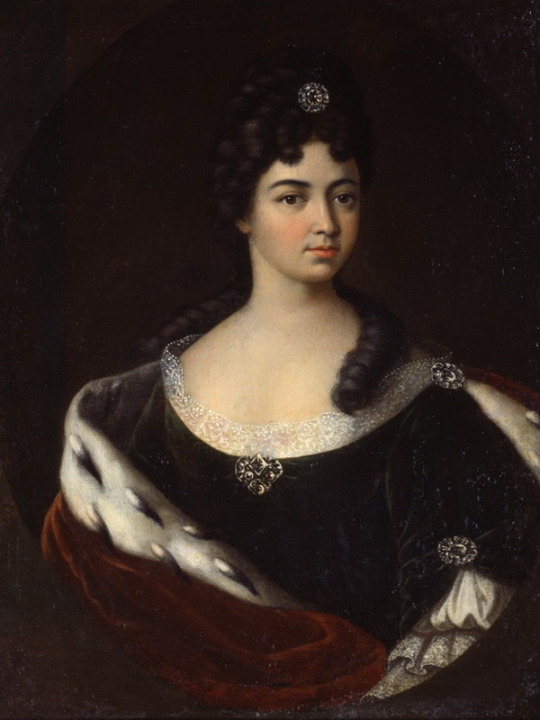
Maria Dmitrievna Cantemirovna (1700–1754) was a Romanian noblewoman, Princess of Moldavia, a lady in waiting and salonist, and a mistress of Peter the Great, the Emperor of Russia.
3 notes
·
View notes
Text
there are two old romanian movies that im DYING to watch i downloaded them i think from archive.org but i cant. for the life of me find any subtitles. theyre in romanian. i dont know romanian. i mean im learning it but im nowhere near the level required to watch a full movie with no subs
#cantemir (1973) and muschetarul roman (1975) if anyone has any idea where i can find subs for them. or any site i can watch them from.#i will love you for ever and ever#and ever.
1 note
·
View note
Text
https://romaniasweetromania.com/2023/01/despre-logica-si-ziua-ei-intrebati-l-pe-cantemir/

#dimitrie cantemir#Leon Birnbaum#logica#Mircea Dumitru#Titu Maiorescu#UNESCO#World Logic Day#Ziua Mondiala a Logicii#logic
0 notes
Text
Conferința preoțească din Protopopiatul Fălticeni. Distincție acordată preotului Gheorghe Lungu de la Parohia „Sfântul Apostol Andrei”
Marți, 7 noiembrie, a avut loc o nouă conferință preoțească în Arhiepiscopia Sucevei și Rădăuților, în Protopopiatul Fălticeni. Evenimentul a fost organizat cu binecuvântarea Înaltpreasfințitului Părinte Calinic și s-a desfășurat la Mănăstirea Sihăstria Râșcăi.
Conferința a reunit clericii din Protopopiatul Fălticeni și a avut două teme principale: “Anul omagial al pastorației persoanelor…
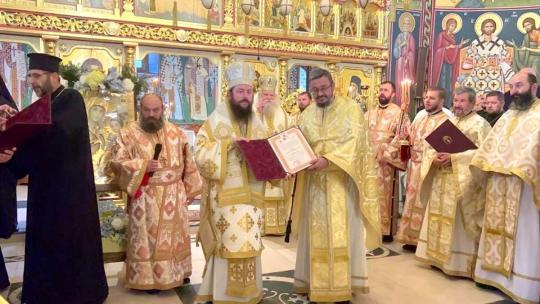
View On WordPress
#activitate pastoral-misionară#arhiepiscopia sucevei și rădăuților#Înaltpreasfințitul Părinte Calinic#ciprian porumbescu#conferință preoțească#Dimitrie Cantemir#Editura Crimca#eveniment religios.#știri din fălticeni#știri fălticeni online#falticeni#filantropie#fălticeni online#imnografia bisericească#mănăstirea sihăstria râșcăi#omagierea vârstnicilor#premii preoți#protopopiatul fălticeni
0 notes
Text
Retrospectivă istorică privind începuturile activităţii de informaţii pe teritoriul românesc
Jurnalul: Intelligence Info, Volumul 1, Numărul 1, Septembrie 2022
Pagini: 29-38
Autori: Tiberiu Tănase
Limba: română
DOI:
Cuvinte cheie: activitatea de informaţii, Ţările Române, Şerban Constantin, Constantin Cantemir, Constantin Brâncoveanu, servicii secrete
URL:…

View On WordPress
#activitatea de informaţii#Constantin Brâncoveanu#Constantin Cantemir#Şerban Constantin#servicii secrete#Ţările Române
0 notes
Text
Biblioteca Digitală - ediții publicate în 1800
În prezent, cca 23 ediții, publicate în 1800, sunt disponibile spre lectură online în Biblioteca Digitală a Bibliotecii Municipale „B.P. Hasdeu”. Unele din aceste ediții, deși sunt scrise în limba română, pot fi lecturate cu dificultate întrucât conțin și caractere chirilice (ex.Urikariulu Hrisoave, anaforale, tratate și alte acte de ale Moldo-Valahiei). În paginile acestor ediții vechi se…
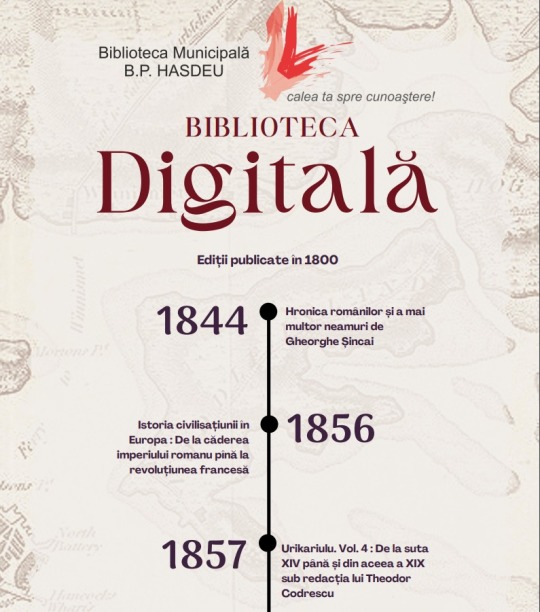
View On WordPress
#biblioteca digitala#Biblioteca Municipală "B.P. Hasdeu"#Bogdan Petriceicu Hasdeu#cărți vechi#Dimitrie Cantemir#Gheorghe Șincai#Istoria civilisaţiunii în Europa
0 notes
Text
Știri: Festivalul de muzică orientală „Dimitrie Cantemir” (26–28 mai 2023, Iași)
În perioada 26–28 mai 2023, Arhiepiscopia Iașilor organizează Festivalul de muzică orientală „Dimitrie Cantemir”. Evenimentul va prezenta muzică orientală, otomană și persană și muzică scrisă ori culeasă de Dimitrie Cantemir. Vor cânta cele mai bune ansambluri din România, Turcia și Iran.
Program:
26 mai 2023, ora 19.00, Sala Unirii din Iași – concertul extraordinar susținut de Ansamblul de…
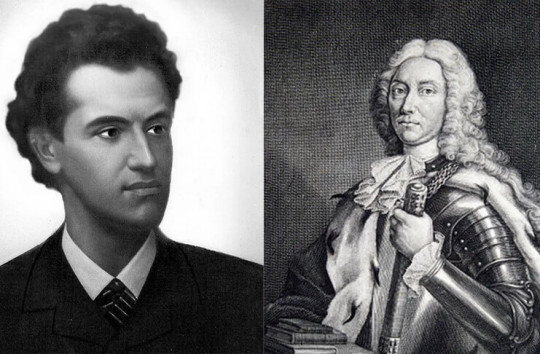
View On WordPress
#Ciprian Porumbescu#cultură#Dimitrie Cantemir#festival#istorie#leviathan.ro#muzica#muzică clasică#știri
0 notes
Text
2023, anul Dimitrie Cantemir şi Ciprian Porumbescu
2023, anul Dimitrie Cantemir şi Ciprian Porumbescu
2023 este “Anul cultural Dimitrie Cantemir şi Ciprian Porumbescu”. Preşedintele Klaus Iohannis a promulgat proiectul de lege.
Prin legea promulgată, se instituie anul 2023 ca „Anul cultural Dimitrie Cantemir şi Ciprian Porumbescuˮ, pentru celebrarea vieţii şi operei cărturarului Dimitrie Cantemir şi a operei compozitorului Ciprian Porumbescu.
Cu prilejul sărbătoririi „Anului cultural Dimitrie…
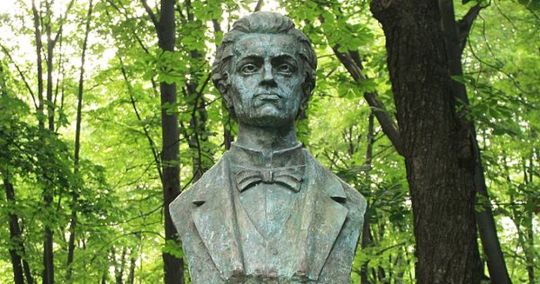
View On WordPress
0 notes
Link
Les empires sont des espaces géographiques cardinaux avec un centre de pouvoir et un ou plusieurs peuples dans la zone de domination. Dès que le cercle des quatre monarchies, qui sont en fait des groupes de peuples subordonnés au centre impérial, se referme, un nouveau cycle recommence. Ce développement de chaque monarchie suit une évolution dialectique, un schéma naturel qui suit la loi universelle de la causalité, devenant, dès la naissance, puis s'épanouissant, atteignant le sommet de l'évolution et vers le bas, se décomposant et disparaissant. Des éléments de la dialectique de l'évolution historique pré-hégélienne, tels que le sens du devenir, du changement, la loi de l'unité et de la lutte des contraires, ou la loi de la négation de la négation, sont évidents chez Cantemir, un siècle plus tôt, à la fois dans l'étude qui nous occupe, et surtout dans Incrementa et Decrementa Aulae Othmannicae (Elévation et chute de la cour ottomane), bien que le philosophe et historien Dimitrie Cantemir ne les décrive pas de cette manière. Les phases de la montée et de la chute de l'empire correspondent aux phases d'évolution et d'involution naturelles et historiques. Tout ce qui se développe et forme des objets spécifiques, et ces objets spécifiques incluent les monarchies, souligne l'auteur de manière convaincante, (...)
"doit apparaître et disparaître, changer et se réincarner, naître et mourir, avoir une fin quelconque, sauf lorsqu'elle est soutenue par la grâce divine (...) car Dieu et la nature ne font rien et ne connaissent rien par hasard, c'est-à-dire par la chance".
0 notes
Text
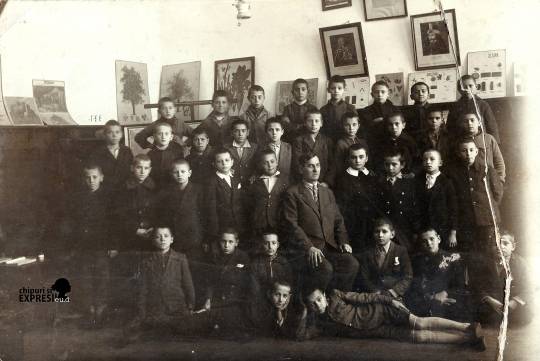


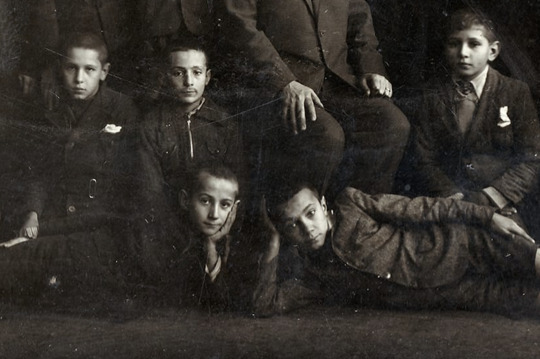
"Amintire din anul 1935... din cl. IV primară de baeți"
Photograph of a grade 4 boys' class in Galați, Romania. Behind the class and teacher are diagrams of different trees and flowers, and portraits of Vlad Țepeș and Dimitrie Cantemir.
Chipuri și Expresii
30 notes
·
View notes
Text
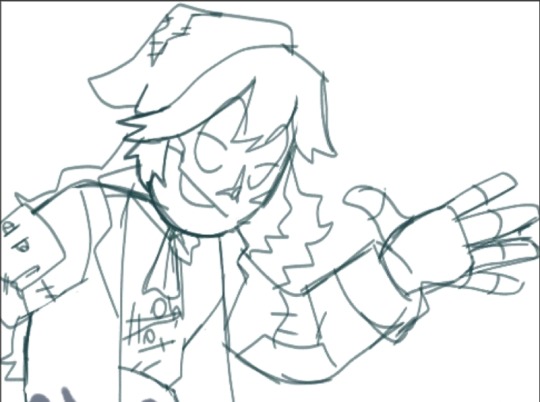
Ettore

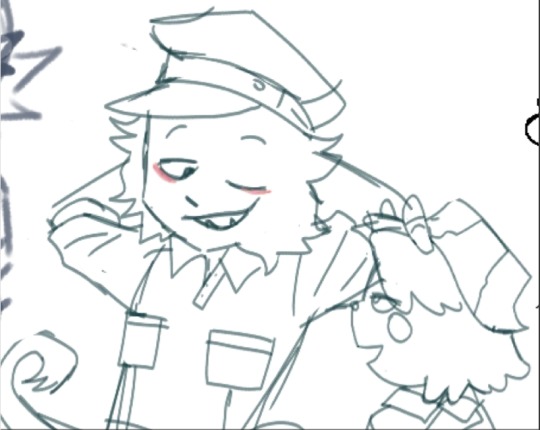

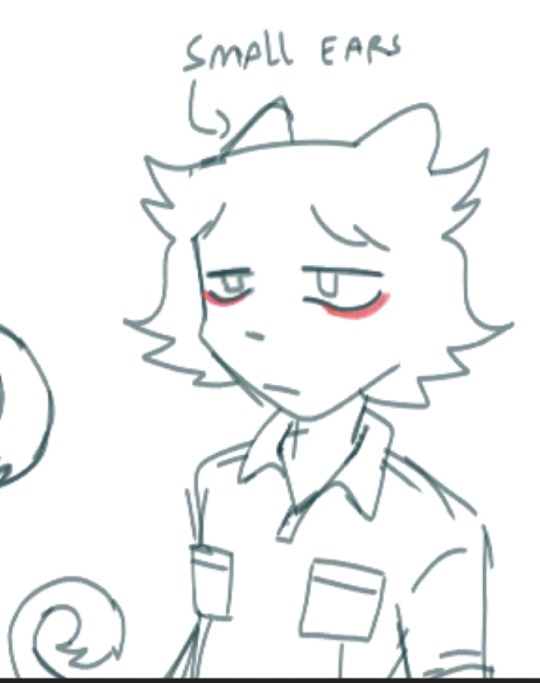

Cantemir,Patson and Skuler doodles
13 notes
·
View notes
Photo
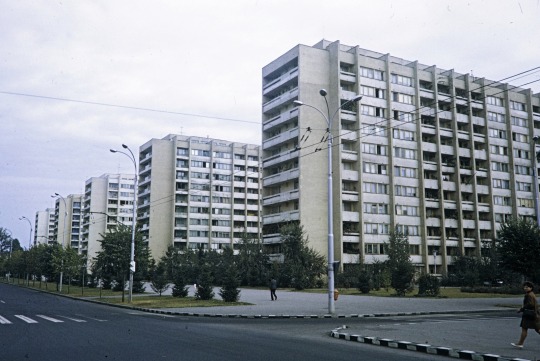
Dimitrie Cantemir Boulevard, Bucharest, 1970. From the Budapest Municipal Photography Company archive.
62 notes
·
View notes
Text
Recitalul cameral “CANTEMIR 300” deschide programul Zilele Culturii Fălticenene
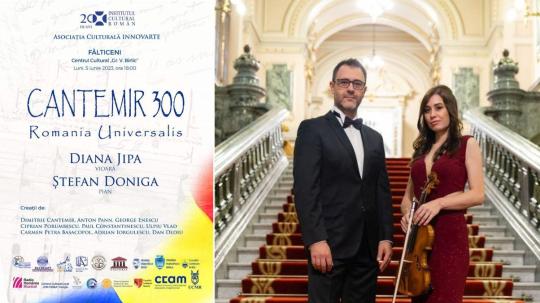
View On WordPress
#concert cameral fălticeni#știri din fălticeni#știri fălticeni online#fălticeni online#pianistul ștefan doniga#recital cameral cantemir 300#recital cameral fălticeni#violonista diana jipa
0 notes
Text
Romania and his relationships
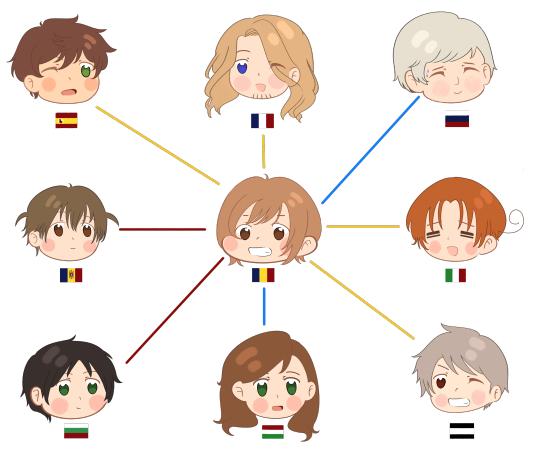
La mulți ani, România! 🇷🇴
As a special treat for today, here are some headcanons about Ro and his closest relationships throughout the years. The lines stand for family, friends and tense relations.
Romania
Was "born" as a result of the Romanization of Dacia (106 - 271 CE)
And gradually became known as Wallachia even though he represented all the Romanians in the Carpato-Danubian-Pontic territory.
A troublemaker with a fatalist attitude.
He's a gourmand but regrets it because his food is heavy.
Is acutely aware of his position as a Latin "island" in a Slavic "sea” and is extra sensitive when people try to deny his heritage.
Has a complicated relationship with the Church. His faith is almost as important to his identity as his language because it kept him from assimilating with the empires which ruled him (the Catholic Austro-Hungarians and the Muslim Ottomans).
Lately, his fashion choices have become more daring and experimental.
He's very street-smart and can blend in with any crowd.
He's very superstitious and believes in old-world remedies. He’s big on conspiracies and sometimes thinks the world is plotting against him.
Is proud of the inventions his people gifted the world, like the fountain pen, the first experimental air jet, insulin and so on.
Does anything in his power to avoid staying in Bucharest and owns houses in several cities (like in Sibiu).
Still does not know what to make of communism.
He's a sweet tooth and has been known to claim ownership of his neighbors' food: "What do you mean găluște cu prune are not Romanian? Of course they are!"
He'll roll his eyes when he hears someone mention Dracula but will overlook it if it brings him 💰.
Can speak Greek thanks to being ruled by Phanariots for so long.
Wants to punch something every time Ned opens his mouth. The same goes for Hungary.
He's hardworking and eager to keep up with the rest of the world.
Romania has one of the highest emigration rates in the EU so Ro should have an episode in which he travels abroad to work just like Romano.
Romania and Bulgaria
One of Ro's closest and longest relationships.
They've seen each other at their best and worst.
Their earliest encounter occurred between the 3rd and 7th centuries when the Bulgar and Slav migratory peoples crossed Ro's territory to settle south of the Danube.
Back in the day, Bul personally taught Ro the Cyrillic alphabet. Ro went on to use it until 1862 when the then-ruler of the United Romanian Principalities decreed that the Latin alphabet must replace the Romanian Cyrillic alphabet.
That's right, kids. Romanian, a Latin language, used to be written in Slavic script.
Saw a great deal of each other during their time as Ottoman vassals.
Ro had personally sheltered Bul during his time as a revolutionary émigré. Wallachia became a safe haven for hundreds of Bulgarian revolutionaries during Ottoman rule. After Bulgaria's liberation in 1878, many chose to stay behind and settle in Romania.
Even though Ro and Bul did not always fight on the same side, they hold no resentment over their past. Only friendly jibes! Like Bul calling Ro a "shameless mămăligă eater."
Bul's seaside is very popular among Romanians, so Ro likes to visit Bul during summertime when Bul can hang out in his boxers all he wants and Ro can visit his late queen’s palace.
Nowadays, they bond over being EU’s late-bloomers and GOSSIP. Ro talks himself hoarse on the phone with Bul.
They also discuss the latest Turkish telenovelas but would rather die than admit they like them.
Ro and Russia
A very tense relationship
Have met first through Ro's little brother when Dimitrie Cantemir allied with Peter the Great to form an anti-Ottoman alliance.
Their relationship formalized during the 18th and 19th centuries when Russia demanded a say in Mol and Ro's internal affairs as the "big brother" of all Orthodox Christians in the Ottoman Empire.
Even though the Russian occupation protectorate did not benefit Ro and Mol much, it introduced the two brothers to their first government by law.
With the occupation, the Russians also brought over nobility customs, like ballroom dancing.
After Russia helped Ro gain his independence from the Ottoman Empire, the relationship got warmer (for a while).
King Carol I of Romania had even considered Tsar Nicholas's eldest daughter, Olga, a potential bride for his grandson, Carol II.
But after the Bolshevik takeover and the assassination of the Romanovs, Ro and Russia's relationship turned icy again.
One of the most sensitive topics today is the loss of Romania's national treasure, which was transported to Russia during WWI for safekeeping. Romania had to decide between sending the treasure to Great Britain or Russia. In the end, we chose to send Russia 93 tons of treasure as a display of mutual trust. After the October Revolution, the Bolsheviks seized the treasure and refused to return it. Since then, minuscule parts of the treasure have been returned as displays of "goodwill."
Their relationship hit an all-time low after the loss of Moldova and the installation of the communist regime.
Nowadays, Ro tries to keep his distance from Russia as much as geographically possible.
Ro and Hungary
Ro’s other historically tumultuous relationship
Ro has been the underdog for much of their shared history, but the tables turned after 1918 with Transylvania's independence and Romania’s unification.
Ro remembers a time when both had fought against a common enemy - the Ottoman Empire.
But that alone isn't enough to get over their past.
Ro probably gatecrashed Austria and Hungary's wedding and did everything in his power to be a constant nuisance under their rule.
He sends text messages to Hungary every year on the 4th of August, saying, "you're welcome." Hungary knows to block his number on that day.
Nowadays, I see them being (somewhat) tolerant of each other (even cordial during spells of drunkenness).
Ro can speak fluent Hungarian and shares a people with Hungary.
Ro and Italy
Home to Ro's largest diaspora
One of Ro's closest relationships
Have an easy time understanding each other thanks to their common Latin heritage.
Italy is a popular holiday destination among Romanians, and Ro admires the Italy brothers' culture greatly.
Although they like to tease Ro about his Latin origins, which never fails to annoy Ro.
Ro and Spain
Home to Ro's second-largest diaspora
A generally warm relationship
Romanians are very taken with anything Spanish (see that Romania sent to Eurovision three songs in Spanish: Zaleilah, Llámame , Liubi Liubi, I Love You).
Also have an easy time understanding each other thanks to their common Latin heritage.
Both are very friendly and hospitable, but Ro tends to be more serious and pessimistic than Spain.
Ro is a big fan of Spanish telenovelas and has a romanticized image of Spain (flamenco, paella, sunshine and passionate lovers).
France and Ro
One of Ro's closest and most complicated relationships that had once resembled that between a mentor and his protégé.
Especially during Napoleon III's reign when Napoleon actively championed the unification of the Romanian Principalities (Ro and Mol) under a single ruler.
Take that Austro-Hungary, the UK and the Ottomans! 😝
Most of Ro's intellectual class during the 19th and early 20th century was educated in France or emigrated to France at some point.
In turn, plenty of important French figures contributed to Ro's modernization. French architects such as Albert Galleron built some of Romania's most symbolic landmarks, e.g., the Romanian Atheneum, while pioneers such as Carol Davila reformed Romania's national health system and founded its first ambulance system and Bucharest's School of Medicine.
Ro wanted to emulate everything French to the point that Bucharest became known as 'Little Paris' (see that we also have our own Arc de Triomphe).
Ro speaks fluent French and is an avid Francophile.
Although everyone jokes about the white-handkerchief-waving French, the opposite is true in Romania.
Much of the Romanian army's success on the Eastern Front during WWI was owed to General Henri Berthelot, who reorganized, equipped and trained the Romanian army.
After his mission here, he became so attached to Romania that upon seeing the Romanian detachment march during the 1919 Paris military parade, he told a French marshal: "Foch, saluez ! C'est la famille."
Much like Poland, Ro gave France some of his most brilliant minds and talents, like Constantin Brancuși, Emil Cioran, and Eugen Ionescu.
During the Cold War, Ro and France's relationship became colder. Yet Ro was grateful to France for sheltering his dissidents who fled the communist regime.
Nowadays, Ro still looks up to Francis but can't stand his arrogance.
Ro and Prussia
First came in contact during the Teutonic Knights' mission in Transylvania in 1211.
Maintained ties thanks to the presence of Saxons in Transylvania.
Ro and Gil became very, very close after the Romanian Parliament elected Prince Carol of the Prussian dynasty Hohenzollern-Sigmaringen to rule Romania.
Trash-talked Austria at every opportunity given the historical rivalry between the Habsburgs and the Hohenzollerns.
Had a tense relationship during WWI and WWII because Ro liked to switch sides a lot.
Ro was a neutral country until 1916, then an Entente power until 1917, then signed an armistice with the Central Powers in 1917, only to rejoin the war on the Entente's side ONE DAY before the war ended in 1918.
(Congrats Ro! You won the war out of sheer luck.)
Ro switched sides again during WWII and ended up on the Allies' side after initially joining the Axis.
You can see why Gil found Ro such a reliable ally.
Ro and Gil (then DDR) reconnected during the Cold War and maintain an amicable relationship today.
Ro speaks fluent German thanks to his Transylvanian Saxon population.
Mol and Ro
They're the cutest brothers, and I would die for them.
Their relationship holds a deep sense of loss and regret that might never disappear.
There was a time when Mol was admired by all his neighbors (like in 1497 when Ștefan cel Mare put the Polish in their place), and Ro was the proudest brother.
1859 - 1940 was perhaps the happiest time of their life because they were finally together.
Nowadays, Ro knows that Mol is not the same as he was before 1940.
After 1991, Mol found his voice, and Ro couldn't be prouder to see his little brother come into his own.
Still! His growth is so bittersweet!
Ro and Mol always give each other 12 points during Eurovision and consider it the height of betrayal if one doesn't.
Ro sometimes "forgets" to remind people that O-Zone was a Moldovan band.
#aph romania#hws romania#aph prussia#hws prussia#aph france#aph bulgaria#hws france#aph moldova#hws moldova#aph hungary#hws hungary#aph spain#hws spain#aph italy#hws italy#aph russia#hws russia#my fanart#look at the size of this!#and I cut out a good chunk of it too!#Happy National Day Ro!#my hetalia content
71 notes
·
View notes
Text
Biblioteca Digitală OPAC 2023
Lansată în 2021, Biblioteca Digitală a Bibliotecii Municipale „B.P. Hasdeu” numără în prezent 183 de titluri disponibile spre lectură în catalogul online al bibliotecii. La crearea conținuturilor participă în 2023 filialele Biblioteca Centrală, Alba Iulia, Onisifor Ghibu, Târgoviște, Ovidius, Biblioteca Publică de Drept, Lesia Ukrainka, Centrul Academic Internațional „Mihai Eminescu”, Mihail…

View On WordPress
#Alexandru Boldur#biblioteca digitala#Biblioteca Municipală "B.P. Hasdeu"#cărți#Dimitrie Cantemir#Gala Galaction#manuscrise#Mihai Eminescu#Nicolae Iorga#Tudor Arghezi
0 notes
Text
Pitesti Human Experiment (1949-1951)
Pitesti Prison was built sometime between 1937-1941 and operated until 1977 in Romania. It was a political prison for students who were against the communist regime in Romania.
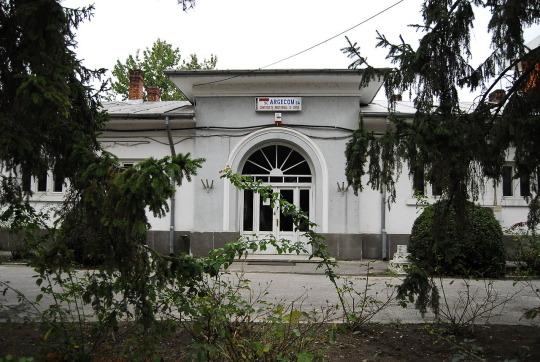
To see the timeline of communism in Romania you can click on the doc below.
The re-education that took place inside the prison was like no other. It was considered by some historians as the worst known acts towards humans on written record.
“one of the most terrible experiments in dehumanization that our epoch has known”. Francois Furet ~ Historian
"The most terrible act of barbarism in the modern world" Alexander Solzhenitsy

The goal of reeducation was to make you hate the things you value and love the most in your life. The communists wanted to reeducate the most devout Christians(students) who were just as convicted to their faith as the communists were to advancing their party. They wanted them to become completely obedient to the party. It was an attack on their soul. In order to re-educate and change one’s personality. They would associate everything the students loved and valued with pure evil. The term “re-education” was cleverly named as it was not a lie, but so the man on the street believed it to be something it wasn’t.
“1949-1951 “The Pitesti Experiment”
The experiment was designed to reengineer the human soul by using methods of torture to destroy the prisoner’s psychologically so they would become absolutely obedient to the communist people’s republic. They would break bones, use red hot irons among other methods of physical torture. Methods of torture were also spiritually and psychologically sadistic. This was how they associated your faith to all things evil.
“The beginning of the unmaskings”
The rumor circulated, around the unmaskings, a day or two before their start, that on the night of December 10, Turcanu Eugen, Popa Alexandru, said Tanu, Martinus, Cantemir and three others whose name I did not find out, were taken out of prison and taken to a latch on the bank of the Arges, where they were told that that night they would form the team that will shoot all the legionary bosses in pitesti prison. Asked if they agreed, they all replied that they were ready for this deed.
They were then taken to the place where the execution was supposed to take place, they were distributed weapons and bullets, waiting for the victims to come. Those who directed this staging were convinced that Turcanu and his team were determined to execute any order they would have received. The first step was taken; all that remained was for the prepared tool to begin executing the plan.
Before December 10, they were brought to room "4 hospital", which I also mentioned, about 30 students, among the peaks, most of them legionnaires, as well as Turcanu's group: Popa Tanu, Martinus, Livinschi, Leonida, Prisäcaru, Cantemir, Virgil Bordeianu and some students from Câmpulung Moldovenesc.
Turcanu and his group were not discovered to have been re-educated, on the contrary, they were gossiping Bogdanovici and those who had joined thereeducationinSuceava, with the intention of dragging those in the room by the tongue, to see in what waters they were bathing.
As everything was directed, Turcanu caused a scandal and began the scuffle between his group and the other students. During the scuffle, a window broke. This was the signal for the administration to intervene. The door was knocked on and the next moment, director Dumitrescu and Lieutenant Marina, with about 30 guards, entered the room. Director and political officer Marina fired pistols into the ceiling, and the guards, with chimes, coming from the ox and centimetres, pounced on the students to make one of his cups.
It was no longer known if they were living people or corpses. It was not enough so, but those who were not educated in the corridor were taken out, and Turcanu's group and the guards began again to beat them so badly, that there were only puddles of blood on the ground.
The legionary students, chosen from among the peaks, were then taken to the death cells on the head of the T and tormented by Turcanu, over a year, with the most terrible and wild tortures.
Here are some names of these martyrs: Pop Cornel, Mägirescu Eugen, Popescu Aristotel, Pavaloaia Constantin, Patráscanu Nuti, Caziuc, Voinea Octavian, Soltuz Laurentiu, Juberian, Parizianu Gheorghe, Strächinariu Constantin, Dan Lucinescu etc. This explains the collapse of these comrades, with the exception of Parizianu. They cannot be judged: when you accuse someone, you must be in his position, and when it comes to torture, to honestly confess if you could have endured the supplication that the one you arrogate to your right to judge has endured.
As of this date, director Dumitrescu and Marina have not exercised their role; the one who was running the prison was Turcanu.
He had double keys to all the rooms and cells of the prison. I've seen him dozens of times, with the tuft of keys in his hand, authoritarian and fearsome, beating horror even in the guards.
The unmasking in Pitesti lasted from December 10, 1949 to September 1951. These young people who have been isolated, only God knows what sufferings they have endured, and they are also given the opportunity to commit suicide.
On December 10, 1949, the administration and the guards in Pitesti prison disappeared from the stage. The only actor who played the play was Turcanu. Only he locked and unlocked, only he gave orders to the guards. He and his masters, General Nicolskiand Colonel Zeller. Nothing moves without them knowing what's going on. On the night of December 10, 1949, many of us, from the other wards, heard noises, but we could not understand what was happening.
“Methods of torture”
The tortures were well dosed and ceased when the inmate was on the verge of death.
They were varied: beating, starvation, the obligation to sit in a fixed position 17 hours a day - the legs stretched horizontally, the hands on the ganunchi and the bust at 90 degrees - at the slightest movement the supervisor intervening with the bat; they were forced to drink urine, to eat the messes inthe tinetawhere they made their necessities; forced to drink water with a lot of salt and then let it dry out of thirst, and many others, invented by the sick mind of the torturers.
Those who gave in were obliged to make their
"unmasking", that is, to say everything they did not declare at the ancestry, to betray the inmates who helped them in prison or the guards who had a human behavior. Also, for the destruction to be complete, in front of everyone in the cell, everyone had to mock the memory of what was most important to him.
For example, someone loved his mother or wife very much. In front of everyone, he had to defame them, to make the most obscene and absurd statements against them. Anything that was bright and good in the consciousness of the one who was still had to be defamed and filled with mud.
“For the theological students”
The theological and godly students - the "mystical bandits", as they were called - were forced to apostate, to deny God, blaspheming everything related to the Christian faith. On Christmas or Easter, on the songs of carols or the Prophet, they were forced to sing texts with obscenities and indescribable insults against the Savior and His Mother. At the same time, they were forced to make blasphemous processions. To perform
"liturgies" with the miseries in the matter of necessities and then to "share" with them. Some were "baptized" by immersion in the hardaul with feces. I think these are enough to figure out the Satanism of re-education.
After the inmate made his "unmasking", in order to prove that he had re-educated himself, he had to, in his turn, become a torturer and convince another, to deny himself "of all the bourgeois rot" and to adopt the communist ideology. This led, under terror, to a real brainwashing. The tortured ones, no longer able to endure the continuous torments, having no possibility of suicide, being closely surpavegheati, gave in and turned into robots with a hardened heart, becoming of the victims, the horses. Even after they arrived reeducated they did not escape terror, because at the slightest sign of solidarity with the tormented, they passed again through the torture mill. Thus, living in a permanent terror, suspecting each other, they collapsed continuously with no possibility of recovery.
“One last satanic method”
Another satanic aspect was that everything you hid and represented a fulcrum on the path of inner collapse tormented you so much that you asked yourself to expose yourself, feeling through this a relief, as after a confession, although these confessions were used against you. A very strange process took place, producing mutations in the personality of the tortured one, who came to deny the previous concepts and to adopt what Turcanu imposed on him, with the conviction that it does him a good. In this process of brainwashing "his mind is enlightened" he lived something like a relief, he "understood" everything he had rejected before and he started with all conviction to bring the others to the same stage of 'enlightenment'. For us, who have not gone through such demonic states, things are incomprehensible.
Most of them tortured others being themselves under the empire of terror, without the mutations we talked about above. The system was designed so that under continuous torture were very rare the cases of those who resisted to the end, generally making compromises, bigger or smaller, according to the structure and resistance of each one.
Here some good resources for more information on the Pitesti Prison. I plan on making several blog posts on this topic and on Romanian Communism.
- The first time I had heard about the Pitesti Prison was during the summer of 2021. A friend of mine recommended “The Martyrmade Podcast” and the episode titled The Anti Humans.
- “The Anti Humans” book written by Dumitru Bacu. Bacu was Romanian born in Greek territory, went to Romania for his university education and there became a member of the anti-Communist organization that flourished in that nation before and during the tragic and fratricidal Second World War. He was a political prisoner in Pitesti Prison and this book is his firsthand experiences of what he went through.
8 notes
·
View notes